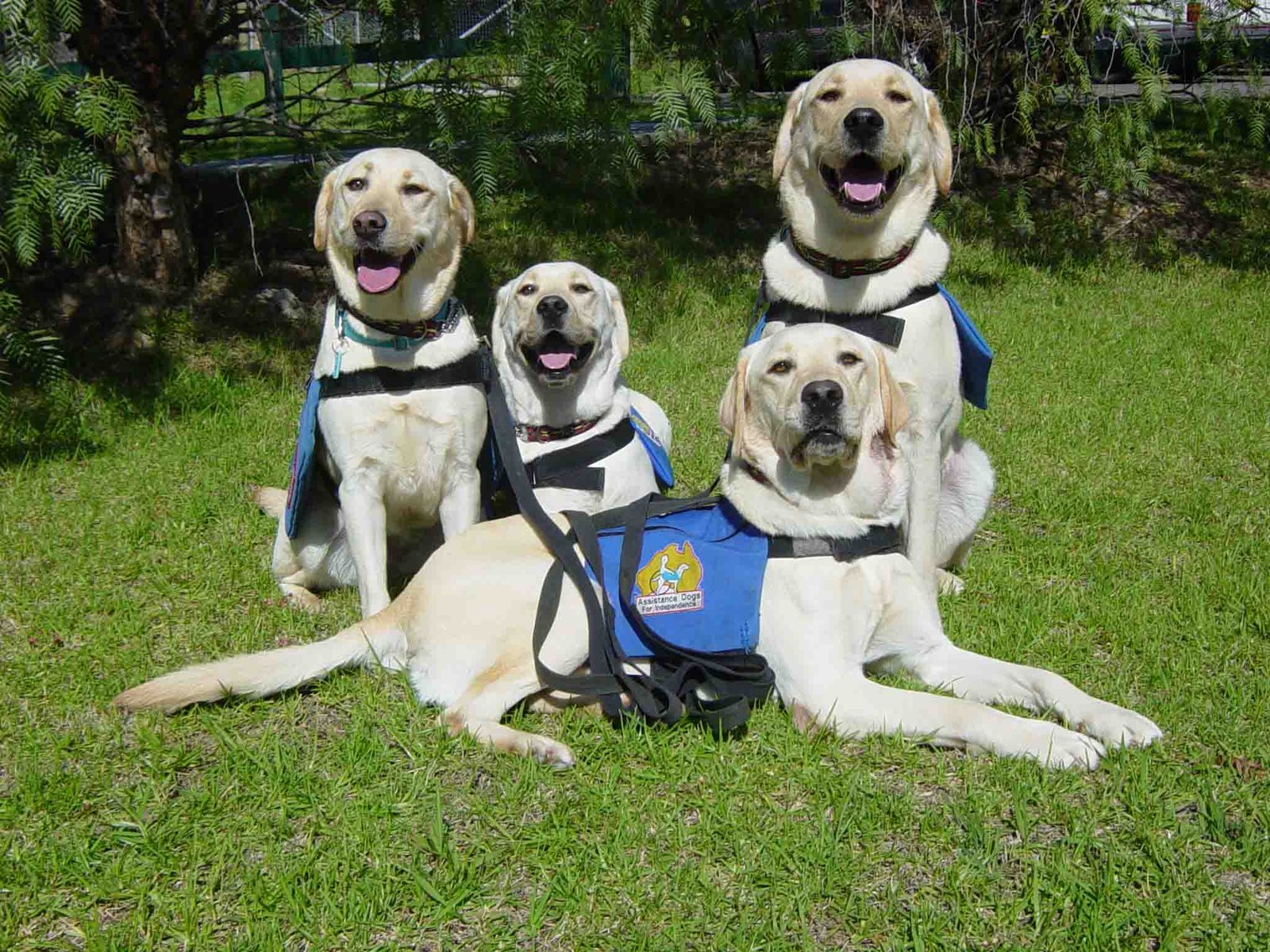Assistance Dogs
There are three types of assistance dogs to assist people with physical disabilities:
Service Dogs – are placed with adults with physical disabilities, these dogs are the most highly trained to help their owner inside and outside of the house. All service dogs have full public access right so they can accompany their owner anywhere in the community.
Support Dogs – are mainly provided families with a child with a disability or to people who may need some assistance around the home.
Facility Dogs – Trained to be companions to everyone at care facilities such as nursing homes or children’s hospices.
A Service Dog is trained over a two year period to assist people with a range of disabilities inside and outside of the home. They can provide independence and freedom that would not be achievable otherwise and can reduce reliance on a human caregiver but is not a replacement.
For people with physical disabilities, dogs are trained to do tasks including, but not limited to:
• Retrieving dropped items
• Opening and closing doors, wardrobes and drawers
• Opening and retrieving items from the fridge
• Pulling washing out of the machine (front loaders only)
• Removing items of clothing such as socks and jumpers
• Retrieving the phone
• Alert bark if their owner fall out of their wheelchair or is in danger
• Press the buttons at the traffic lights and lifts
• Accompany their owner on public transport
• Brace when need to support their owner if they become unstable in their chair
• Emergency bark
• Deliver and retrieve items at the shop counter
• Help carry or pick up shopping items
Apart from the tangible day to day tasks a Service Dog can also:
• Assist with the development and improvement of motor skills
• Provide greater freedom and independence
• Reduce the need for a carer
• Improve self-esteem and confidence
• Give love and companionship
• Be a great icebreaker and help their owner become more involved in the community reducing the feeling of isolation
A Service Dog has full public access rights meaning they are allowed in any public place* and on all public transport. It is illegal to refuse entry to a Service Dog. People who receive a Service Dog are provided with a photographic identity badge as proof of Service Dog status which they must take with them in public. *The only exceptions are zoos, aquariums, sterile environments, food preparation areas and quarantine areas.
Every dog trained costs over $27,000. This covers all training, food, veterinary treatment, kennelling costs, placement and follow up care. Assistance Dogs are then provided to people living with disabilities free of charge throughout Australia.Recipients include those born with developmental disabilities like cerebral palsy and spina bifida, those who acquire debilitating illnesses like multiple sclerosis, and those who have been in tragic accidents and will never walk again.
The PAWS program (Parents Autism Workshops and Support) provides Assistance dogs to children with Autism. While for some children there will be a clear need for a fully trained assistance dog, a well-trained family pet dog can also have a massively beneficial impact, as often there is a clear bond between the child and the dog.
Educational Support Dogs can be a fantastic addition to any learning environment.The dogs can provide support to students in a number of ways, including offering emotional support, recognising signs of anxiety, and helping improve concentration and communication skills.
Support dogs are also placed with sufferers of post-traumatic stress disorder (PTSD). Assistance Dogs can be trained to provide a combination of physical task-oriented and emotional support to assist their owner and help them to overcome fears. Assistance Dogs placed with PTSD sufferers can be trained to pick up on their owner’s emotions, and can detect signals of anxiety. Upon sensing their owners anxiety, the dog engages in eye contact and body contact to comfort their owner and divert their attention.
The Pups in Prison Program runs all over Australia in partnership and with the support of relevant state government departments. It began in 2002 as a way for Assistance Dogs Australia to train more dogs, while aiming to reduce re-offending behaviour by giving inmates skills to assist with rehabilitation.
Assistance Dogs vs Guide Dogs
Guide Dogs are trained to assist people who are blind or visually impaired. An Assistance Dog is trained to perform everyday tasks for people living with a wide range of disabilities.
Assistance Dogs Australia is a registered charity which does not receive government funding and relies on the generosity of the public to provide its valuable services to the community. Founded in 1996, it trains Labradors and Golden Retrievers to help people with disabilities, providing them with greater freedom and independence.
http://www.assistancedogs.org.au Phone Toll Free: 1800 688 364
Assistance Dogs increase freedom and independence, reduce reliance on human caregivers and act as a great ice-breaker helping overcome social isolation for people living with disabilities.

